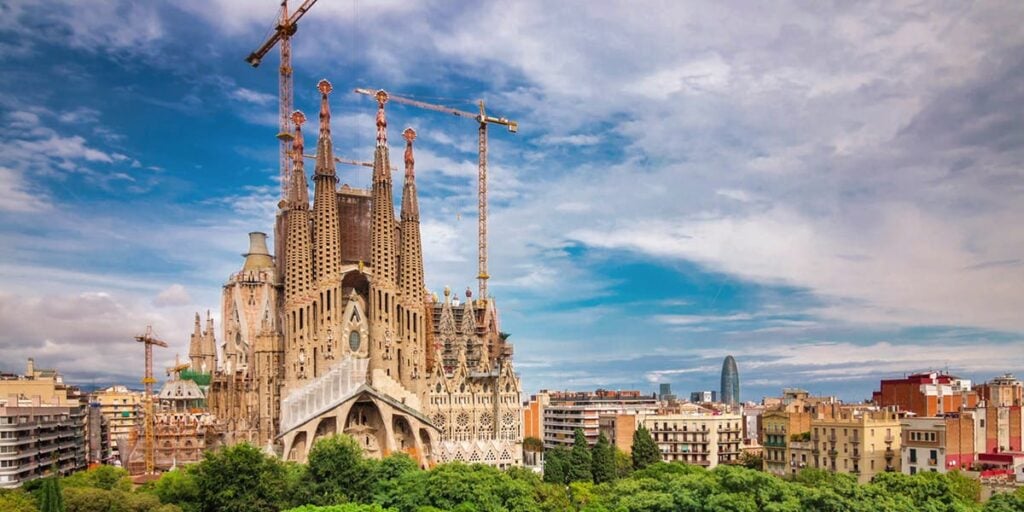The Basilica of La Sagrada Familia is a church in Barcelona, Catalonia, and is currently the largest unfinished Catholic church in the world. It was designed by the Catalan architect, Antoni Gaudi. But did you know that Gaudi had a peculiar request for the construction of his work?
According to the will of its late designer and architect Antoni Gaud, the famous basilica of La Sagrada Familia in Barcelona, Spain, cannot be funded by corporate donations or government funding, making it difficult to complete the building’s construction, which is still ongoing.
The Unfinished Construction
Even with today’s technology, skilled architects and engineers are finding it difficult to decipher and bring to life the complex geometric shapes that will comprise the world’s tallest church standing at 172.5 meters.
Furthermore, despite its international fame, the Sagrada Familia was created by the people for the people, so it has always relied on private donations. There have been times in history when no funding was available, most notably during Spain’s Civil War and the decades that followed. Construction accelerated exponentially only after the 1992 Olympic Games in Barcelona when the city began to gain an international reputation, and the number of visitors increased.
The Sagrada Familia was supposed to be finished in 2026 for the centenary of Gaud’s death, but it has been delayed due to COVID-19. Work has already resumed, but no new completion date has been announced. (Source: The Lonely Planet)
Visiting the Site
The Sagrada Familia site is divided into four sections: the basilica, the school building, the museum, and the towers. Previously, each section required its ticket to be visited. However, due to COVID-19, the only part open to the public is the basilica.
An individual ticket with an audio-guide app, available in 16 languages, costs €26 to visit the basilica. If you prefer to take a guided tour, which is available in six languages, an individual ticket costs €27 and allows you to explore the site on your own after the 50-minute tour.
The Gaud Museum has a replica of the architect’s workshop as well as a collection of his materials and mockups. In 1909, Gaud designed and built a school for the children of the workers. It has a similar design to the Casa Milà.
Each of the three exterior facades has four towers representing the 12 apostles, Nativity, Passion, and Glory. Gaud designed the Nativity Facade, designated a UNESCO World Heritage site in 2005, along with the crypt. The controversial Passion Facade, designed by Josep Maria Subirachs, is located on the west side and has been heavily criticized for being too abstract and not strictly following Gaud’s model. The unfinished Glory Facade is supposed to be the most beautiful of the three when completed and crowned with its missing four towers.
Barcelona’s major attractions can be easily visited after your Sagrada Familia tour in the Right Eixample. Hospital Sant Pau is a must-see landmark designed by Llus Domènech I Montaner, one of Catalan Modernism’s most influential architects after Gaud. Monumental, an imposing former bullfighting arena, is also worth the detour. Finish your Eixample tour with a visit to Barcelona’s triumphal arch, which is located on Passeig de Llus Companies, a palm-lined boulevard that leads to Parc de la Ciutadella, the city’s largest park. (Source: The Lonely Planet)
Image from SagradaFamilia
